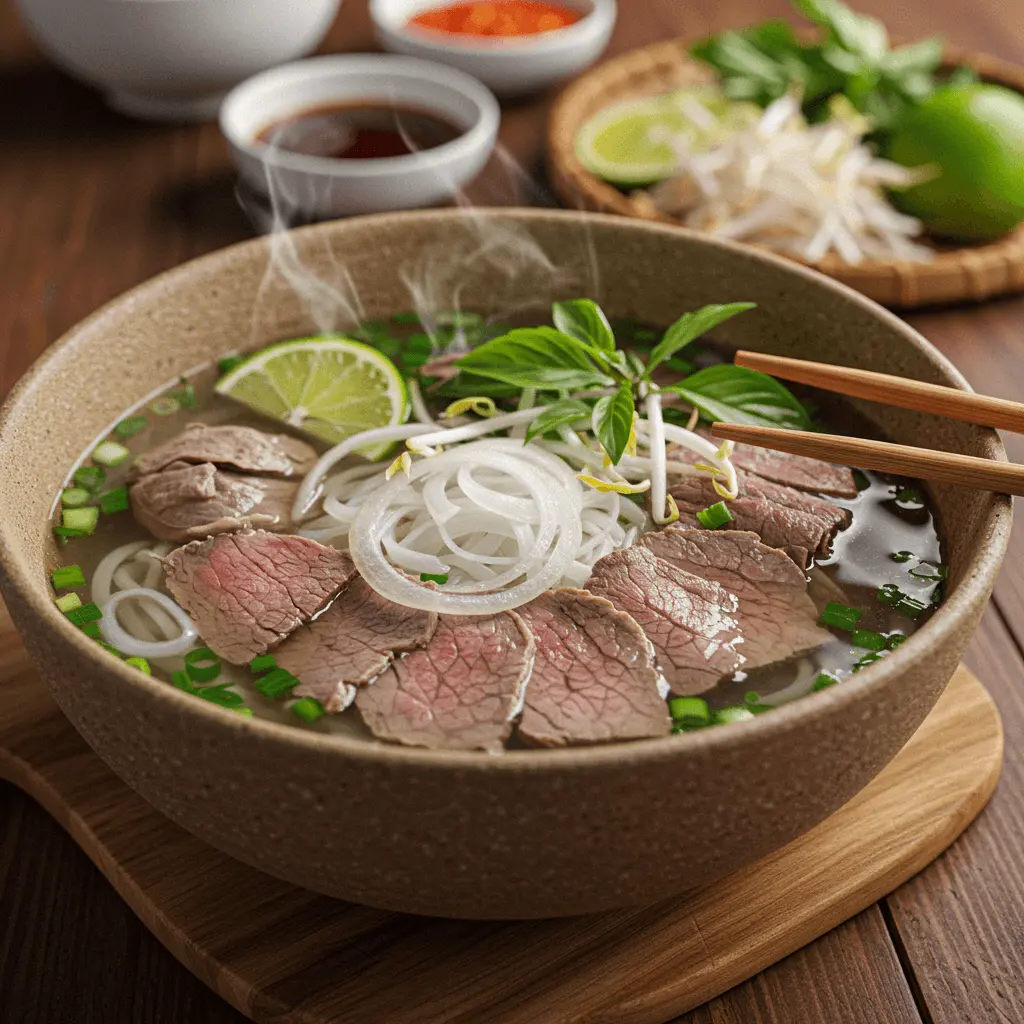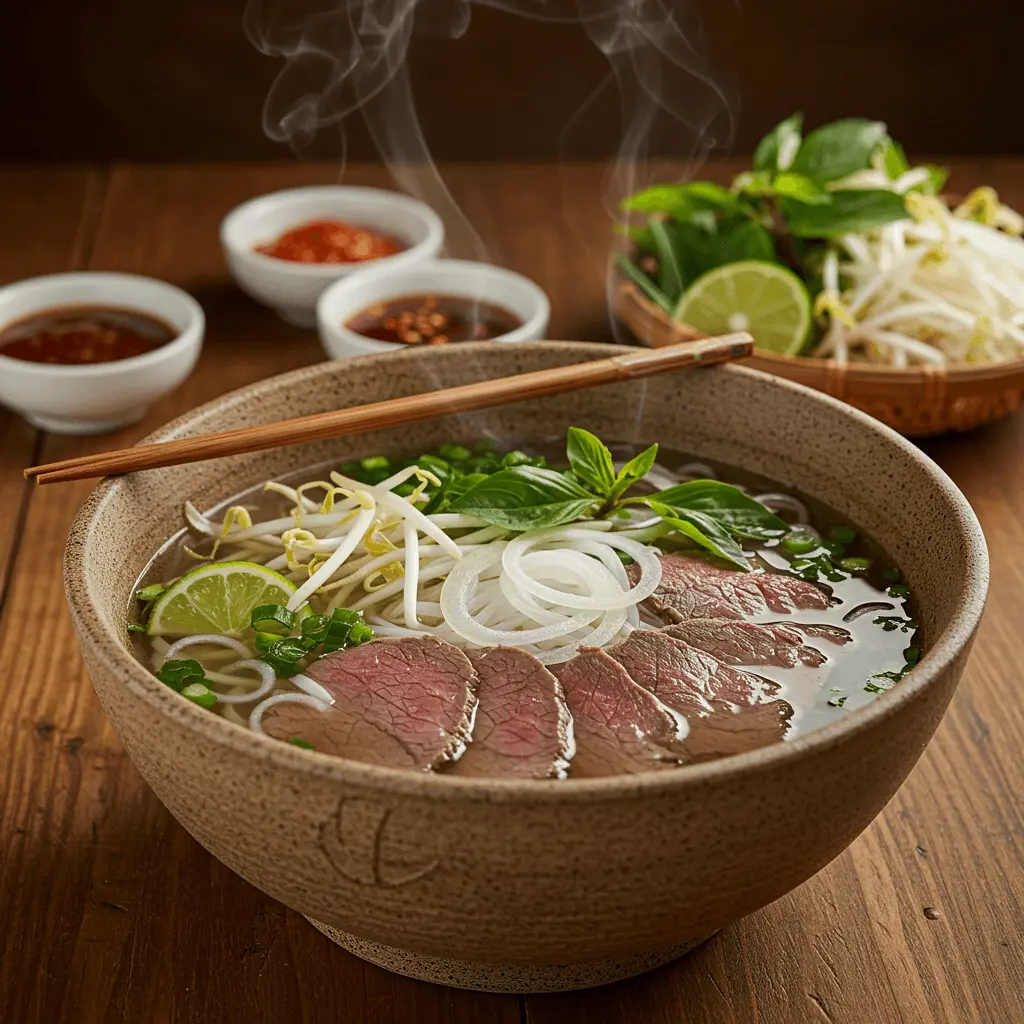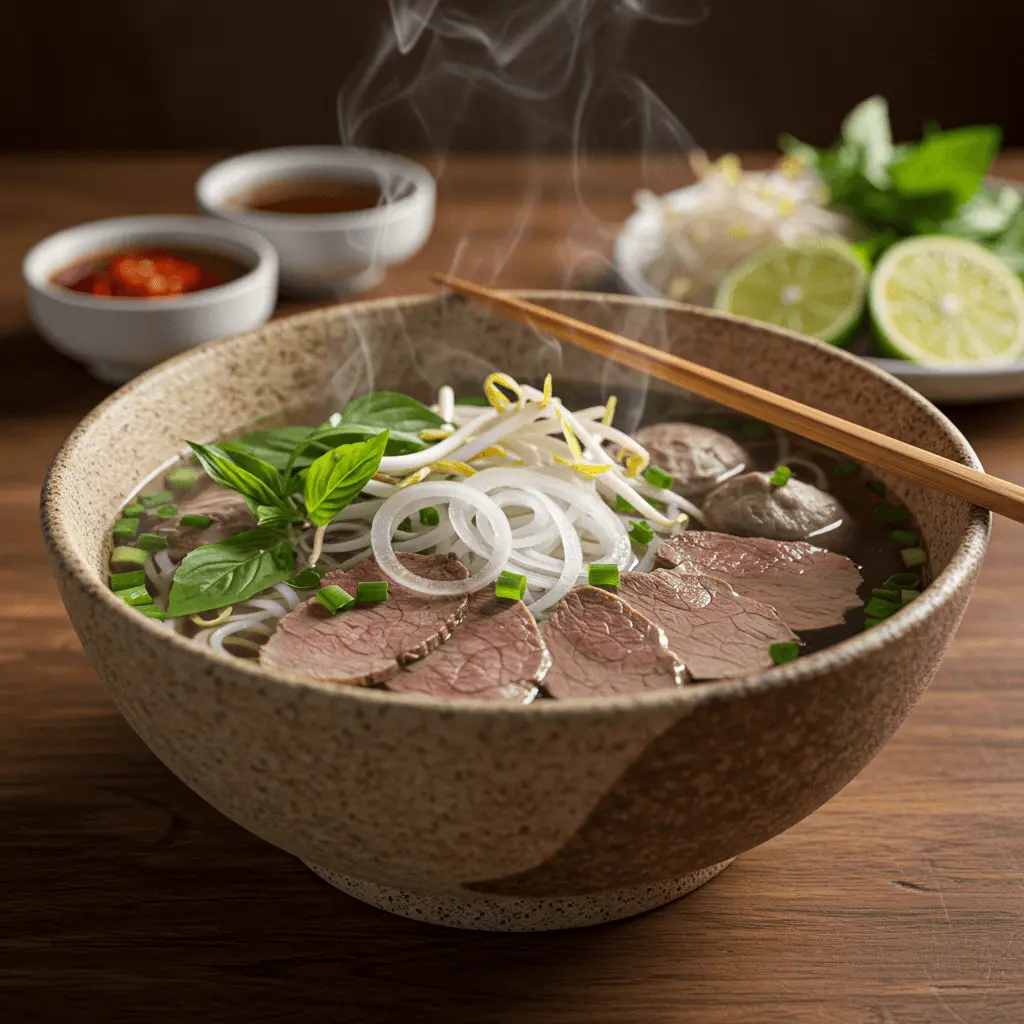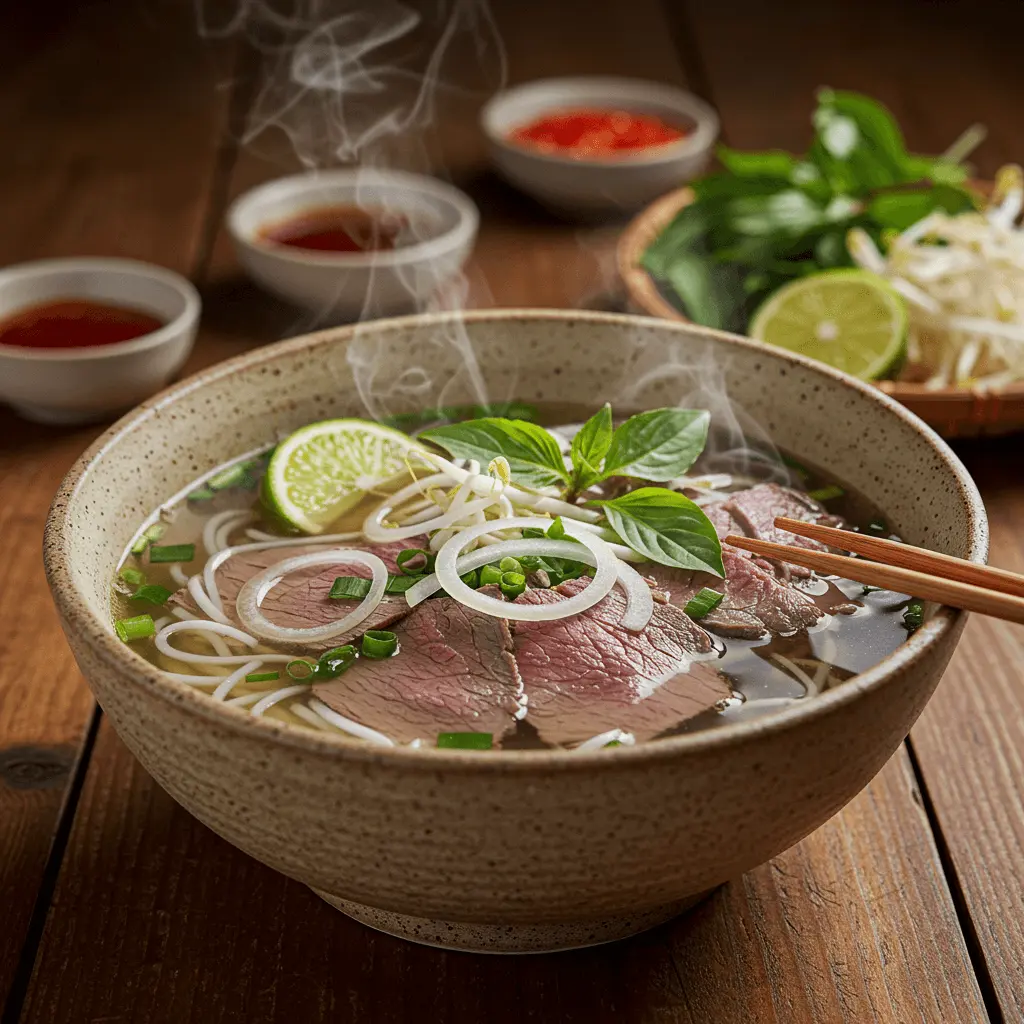What is Pho?
Pho is the national dish of Vietnam, a flavorful noodle soup made with rich, aromatic broth, rice noodles, and meat, typically beef or chicken. It is beloved in Vietnam and worldwide for its depth of flavour and comforting qualities.
History and Origins

Pho is believed to have originated in the early 20th century in Northern Vietnam, particularly in Nam Dinh and Hanoi. The dish likely evolved from French pot-au-feu, combined with traditional Vietnamese flavours and cooking techniques. After the Geneva Accords in 1954, which led to the division of Vietnam, pho made its way to Southern Vietnam, where it took on new characteristics, including a sweeter broth and additional garnishes. After the Vietnam War, refugees brought pho to the United States, Australia, and other countries, cementing its place as an international favourite.
Regional Variations
- Northern Pho (Pho Bac): Characterized by a clear, simple broth, minimal garnishes, and flat rice noodles.
- Southern Pho (Pho Nam): Sweeter, with more complex flavours, served with abundant fresh herbs, bean sprouts, and hoisin or sriracha sauce.
How to Pronounce Pho
Pho is pronounced “fuh”, not “foh.” The proper pronunciation captures the dish’s Vietnamese roots and ensures clear communication when ordering.
What is in Pho?
Pho consists of several key components that create a balanced and aromatic dish.
Broth
The soul of pho lies in its broth, created by simmering beef bones, charred onions, ginger, star anise, cinnamon, cloves, and fish sauce for hours to extract deep flavours.
Rice Noodles
Pho noodles are made from rice and are soft, slippery, and slightly chewy. They absorb the broth’s flavours beautifully.
Meats
Pho is typically made with beef, though chicken, seafood, and vegetarian versions are also popular.
Garnishes
Common garnishes include scallions, yellow onions, bean sprouts, Thai basil, cilantro, lime wedges, and sliced chiles, which add freshness and customization to each bowl.
The Broth
How It’s Made
A great pho broth starts with beef bones (often marrow or knuckle bones) simmering for 6-10 hours to extract rich flavours. Charring onions and ginger adds smokiness, while spices like star anise, cinnamon, and cloves provide warmth and complexity. Fish sauce is used for seasoning.
Simmering Process and Flavor Development
Patience is key when making pho broth. A long, slow simmer extracts collagen, creating a silky texture, while skimming impurities ensures clarity. The longer the broth simmers, the deeper the flavour.
Health Benefits of Bone Broth
- Rich in collagen for joint health and skin elasticity.
- Supports gut health by aiding digestion.
- Provides essential minerals such as calcium and magnesium.
Pho Meat Guide

Common Beef Cuts
- Rare Beef (Tai): Thinly sliced eye-round steak that cooks in hot broth.
- Flank (Nam): A lean and flavorful cut with slight chewiness.
- Brisket (Gau): Rich, fatty, and tender when slow-cooked.
Organ Meats
- Tendon (Gan): Gelatinous and chewy, prized for its texture.
- Tripe (Sach): Mildly flavoured, with a slightly chewy bite.
- Oxtail (Dui Bo): Rich, meaty, and packed with nutrients.
Other Options
- Meatballs (Bo Vien): Firm and bouncy, made from beef and seasonings.
- Chicken Pho: Lighter in taste, with shredded or poached chicken.
- Seafood Pho: Features shrimp, squid, or fish.
- Vegetarian Pho: Uses a mushroom-based broth with tofu and vegetables.
Premium Options
- Filet Mignon: A tender, luxurious choice for pho.
- Lobster Tail: Adds a sweet, delicate seafood touch.
Best Meat for Pho
At the Restaurant
- Pho Special: A combination of meats, including rare beef, flank, brisket, tendon, and tripe.
- Eye Round Steak on the Side: Keeps the beef rare and tender by allowing you to cook it to your preference.
For the Home Cook
- Flank Steak: Slice thinly and cook briefly in the hot broth.
- Brisket: Choose a cut with some fat for tenderness.
- Filet Mignon: A premium choice that remains tender and flavorful.
Pho Types
Beef Pho
The most popular type features cut like flank, eye round steak, brisket, tendon, and tripe.
Chicken Pho
A lighter alternative is made with a chicken-based broth and shredded or poached chicken.
Oxtail Pho
A vibrant and hearty option packed with collagen and essential nutrients.
Vegetarian Pho
Uses a plant-based broth made from mushrooms, carrots, and daikon, with vegetables like bok choy, bell peppers, and tofu.
Seafood Pho
A seafood-infused broth served with shrimp, squid, or fish, often complemented by fresh herbs.
Is Pho Healthy?
Pho is packed with nutrients and can be a wholesome meal.
- Gluten-Free: Rice noodles make pho an excellent option for those avoiding gluten.
- Bone Broth Benefits: Supports gut health, joints, and immunity.
- Organ Meats: High in iron and essential vitamins.
How to Eat Pho Like a Pro

Appreciating the Aroma and Presentation
Take a moment to enjoy the fragrant aroma before diving in.
Mixing Ingredients
Use chopsticks to stir the noodles and meat to coat them evenly in the broth.
Tasting the Broth Before Adding Sauces
Before reaching for hoisin or sriracha, taste the broth as intended.
Using Garnishes
Add lime, Thai basil, cilantro, and bean sprouts to enhance freshness and complexity.
Slurping Etiquette
Slurping is acceptable and encouraged—it helps cool the noodles and enhances the experience.
FAQ
Typically, rare eye round steak (Tai) that cooks in the broth.
It’s likely tripe, an organ meat with a chewy texture.
Pho is nutrient-dense, but portion control is key for calorie-conscious eaters.
Hoisin sauce and Sriracha are commonly added for extra flavour.
The broth’s minerals and spices can support digestion and detoxification.
Yes, but they should monitor their intake of rice noodles, which contain carbohydrates.
Specify your choice of meats and whether you want them cooked separately or in the broth.
Start with small amounts of hoisin or Sriracha and add more as needed. Use fresh herbs and lime for balance.
Yes! Northern pho is more straightforward and delicate, while Southern pho is sweeter and served with more garnishes.

